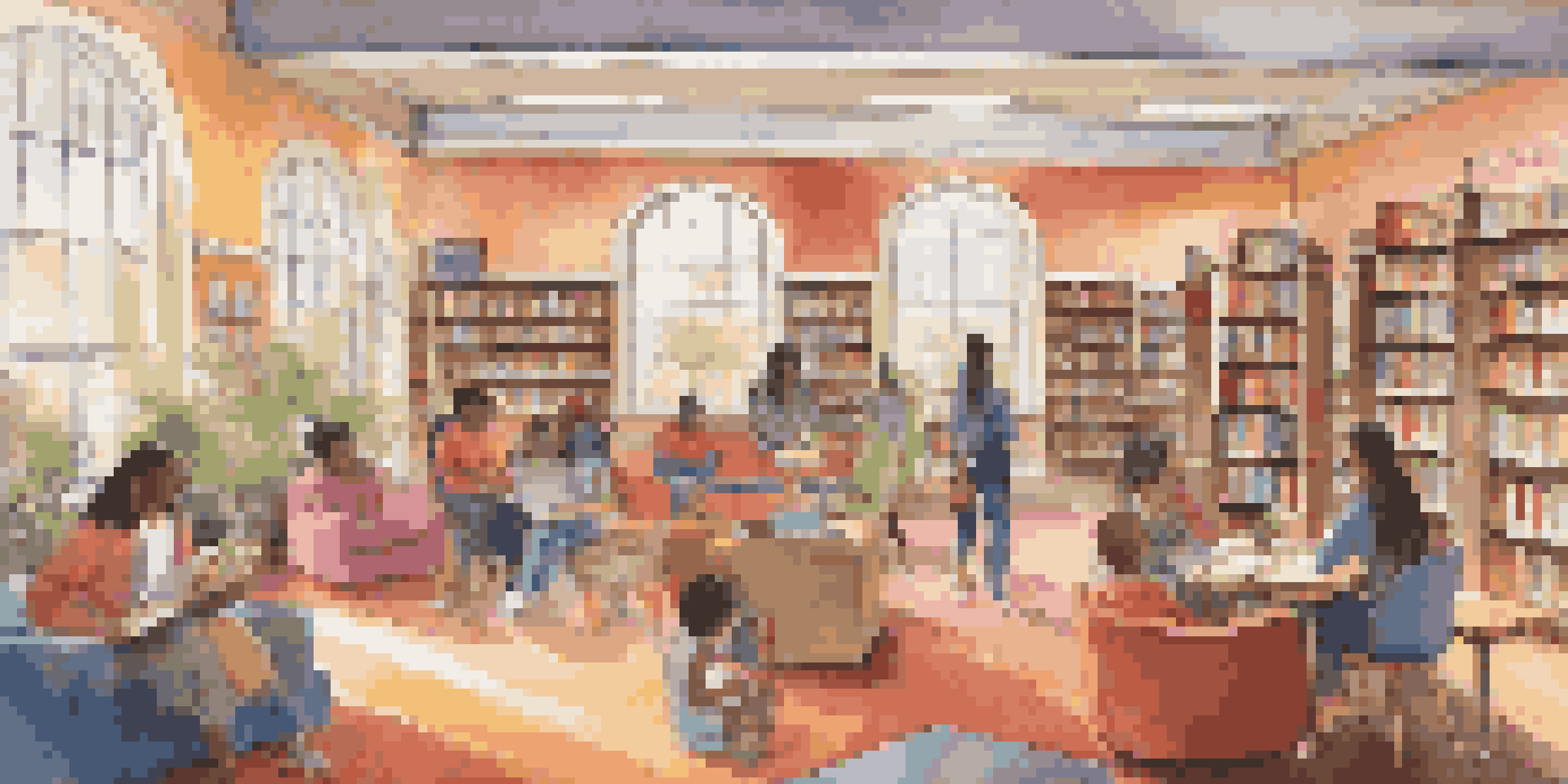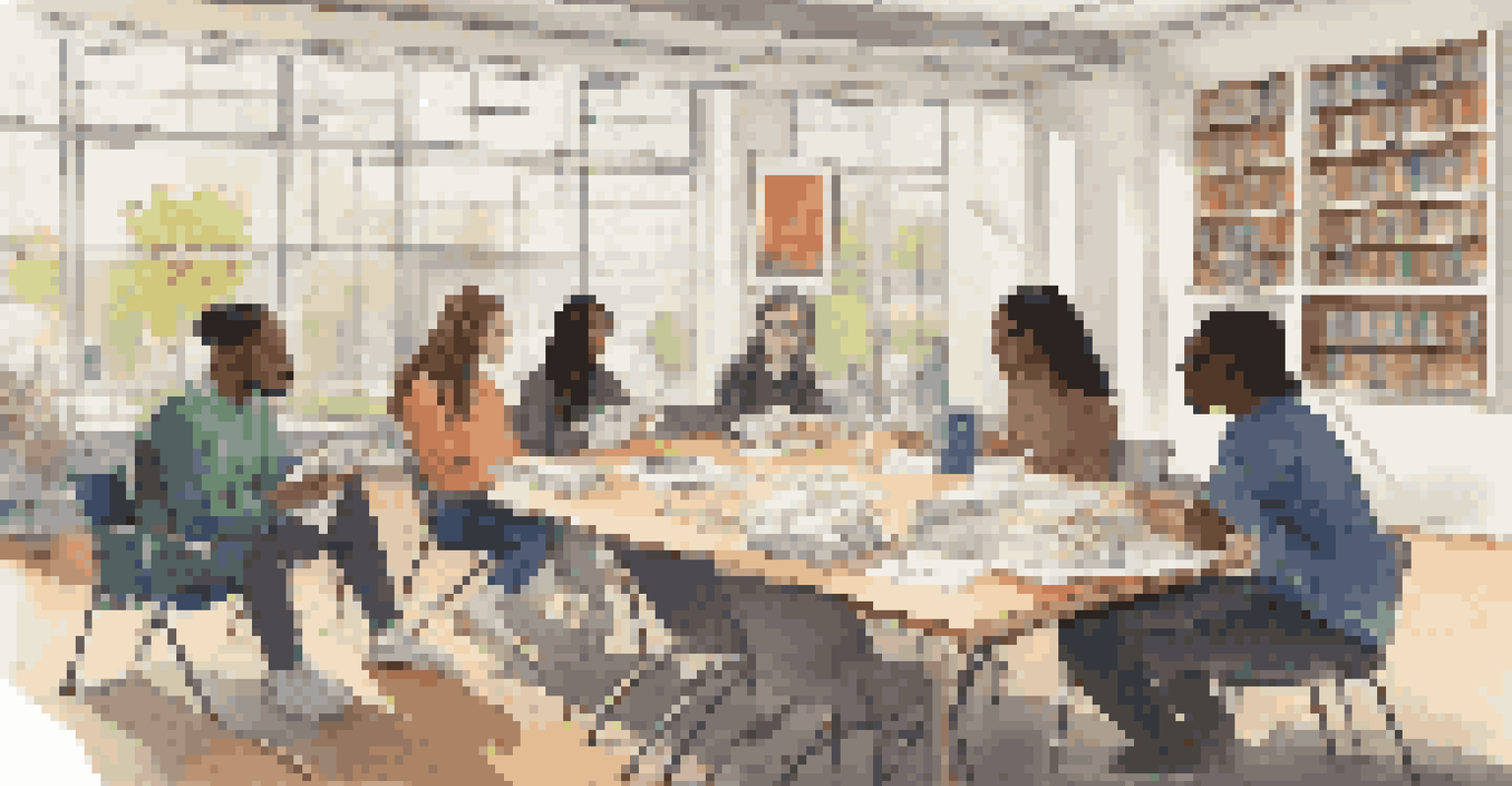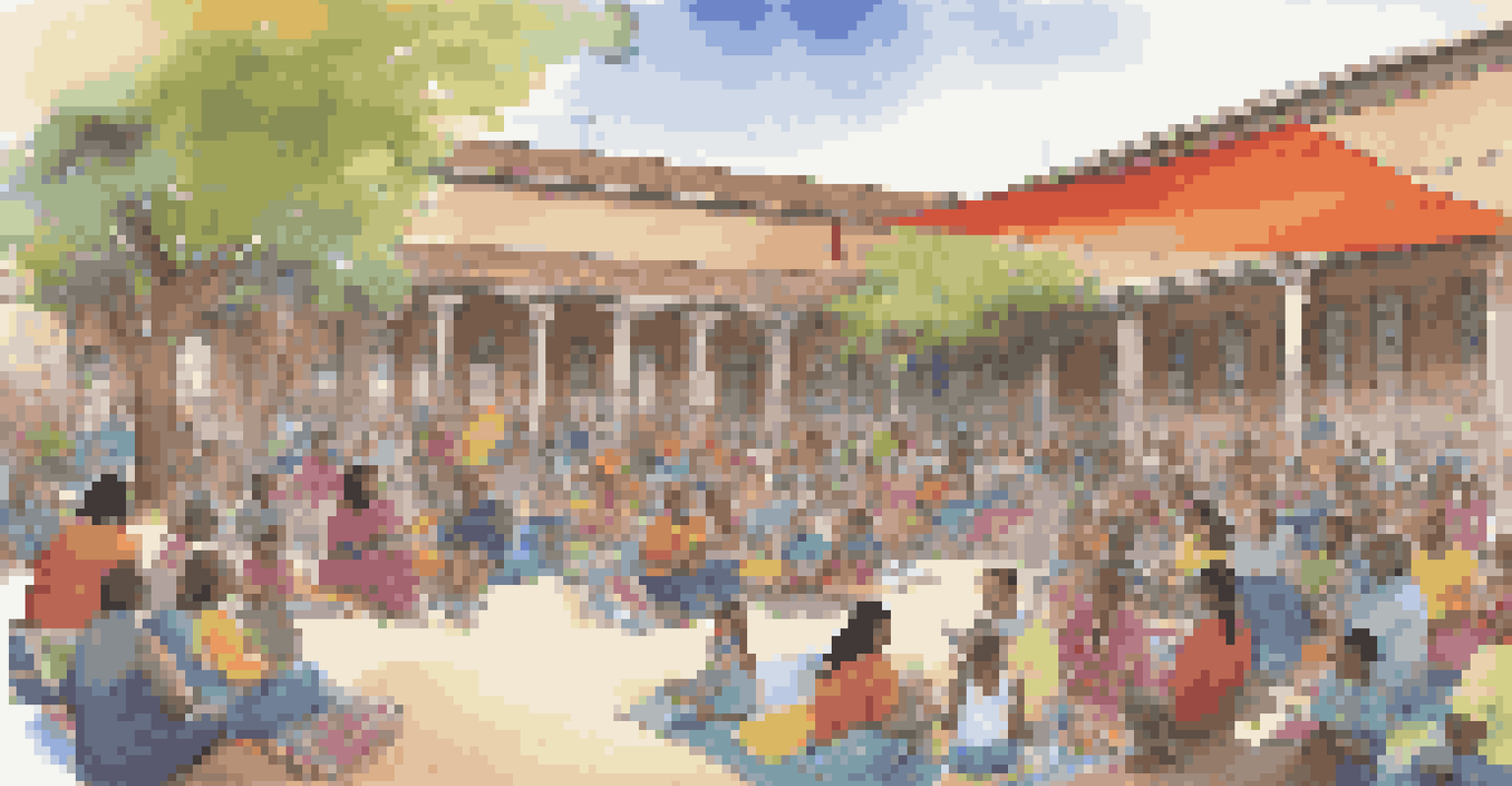Building a Culturally Responsive Classroom Library for Students

Understanding Culturally Responsive Teaching
Culturally responsive teaching is all about recognizing and valuing the diverse backgrounds of students. It encourages educators to incorporate students' cultural experiences into their learning environment. By doing so, we create a more inclusive atmosphere where every student feels represented and engaged.
The best way to predict the future is to create it.
This approach not only enhances students' academic performance but also boosts their self-esteem and sense of belonging. When students see themselves in the stories they read, it fosters deeper connections to the material. It also cultivates empathy and understanding among peers from different backgrounds.
Ultimately, a culturally responsive classroom library is a vital tool for promoting equity in education. It empowers students to explore their identities and learn about others. This enriches their educational experience and helps them navigate an increasingly diverse world.
Assessing Current Library Collections
Before building a culturally responsive library, it's crucial to evaluate your current collection. Take stock of the books you already have and reflect on how well they represent the diversity of your students. Are there significant cultural groups or perspectives missing from your shelves?

This assessment provides a baseline from which you can expand your library. It’s not just about quantity; consider the quality and authenticity of the representation. Engaging with students about what they see (and don't see) can provide valuable insights into their needs and interests.
Embrace Diverse Student Backgrounds
Culturally responsive teaching values students' diverse backgrounds, enhancing their academic performance and sense of belonging.
Once you have a clearer picture, you can identify gaps and begin the process of acquiring new materials. This step ensures that every student can find stories that resonate with their own experiences while also discovering new perspectives.
Selecting Diverse and Authentic Literature
When it comes to building a culturally responsive library, the selection of literature is key. Look for books that reflect a variety of cultures, languages, and experiences. Authenticity is crucial; seek out authors who share the cultural backgrounds of the stories they tell.
Diversity is not about how we differ. Diversity is about embracing one another's uniqueness.
Consider including a mix of fiction and non-fiction, as well as books that represent various genres. From traditional tales to contemporary narratives, diversity in genres can engage a wider range of interests. Also, include bilingual books to cater to multilingual students.
Don't shy away from reaching out to local communities or organizations for recommendations. Engaging with diverse voices not only enriches your collection but also builds connections within the community. It’s about creating a library that is vibrant and reflective of the world around us.
Incorporating Student Voice in Library Choices
Involving students in the library selection process is a powerful way to ensure relevance and engagement. Host discussions or surveys to gather their input on what books they want to see added. This not only empowers students but also helps them feel valued in the decision-making process.
You might even consider creating a 'student advisory board' that meets regularly to discuss new acquisitions and suggest titles. This collaborative approach fosters a sense of ownership over the library, encouraging students to become avid readers and advocates for diverse literature.
Involve Students in Library Choices
Engaging students in the library selection process empowers them and ensures the collection reflects their interests and needs.
By prioritizing student voice, you are not only enhancing their learning experience but also promoting critical thinking and leadership skills. This investment in their opinions helps create a library that truly reflects the interests and needs of your classroom community.
Creating a Welcoming Library Environment
A culturally responsive library goes beyond just the books on the shelves; it's about the environment as well. Create a space that is inviting and encourages exploration. Use colorful displays, comfortable seating, and culturally relevant decorations to make the library a welcoming space for all students.
Consider organizing themed reading corners that highlight different cultures or topics. This can spark curiosity and prompt students to explore new genres and authors. Incorporating art, music, and other cultural elements can further enrich the space.
Additionally, ensure that the library is accessible to all students, including those with disabilities. A welcoming environment fosters a sense of belonging and encourages students to spend more time reading and learning. It’s essential for promoting a love of literature and cultural appreciation.
Engaging with the Community for Resources
Building a culturally responsive library can be a community effort. Reach out to local libraries, cultural organizations, and authors to enrich your collection and programming. These collaborations can provide access to resources, materials, and expertise that might otherwise be out of reach.
Consider hosting community events, such as author readings or cultural festivals, that celebrate diversity and literacy. These events not only promote your library but also engage families and the broader community in meaningful ways. They can create a buzz around the importance of diverse literature.
Create an Inclusive Library Space
A welcoming library environment, enriched with diverse materials and cultural elements, fosters exploration and a love for reading.
By fostering these connections, you can enhance the library experience for students and families alike. It’s about creating a network of support that values cultural representation and promotes reading as a community activity.
Evaluating and Sustaining Your Library Efforts
Building a culturally responsive library is an ongoing journey that requires regular evaluation and adjustment. Set aside time to review your collection periodically to ensure it remains relevant and inclusive. Seek feedback from students, parents, and community members to identify areas for improvement.
Consider implementing a system for tracking which books are popular and which might need to be replaced or updated. Keeping your library dynamic and responsive to student needs will help maintain its relevance and impact.

Sustainability is key to fostering a culturally responsive library. This can involve continuous professional development for educators, collaboration with community partners, and ongoing engagement with students. By committing to this process, you ensure that your library remains a vibrant resource for all learners.